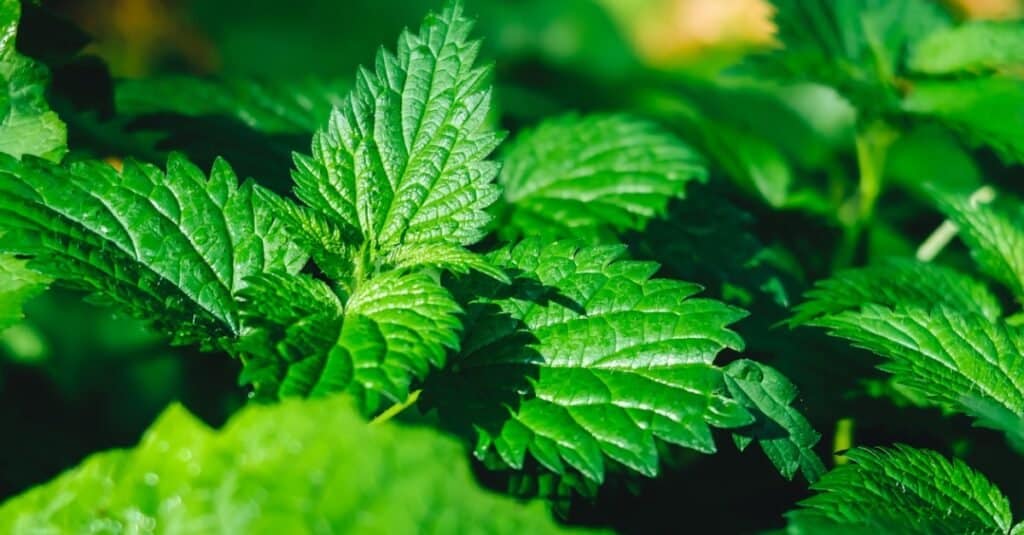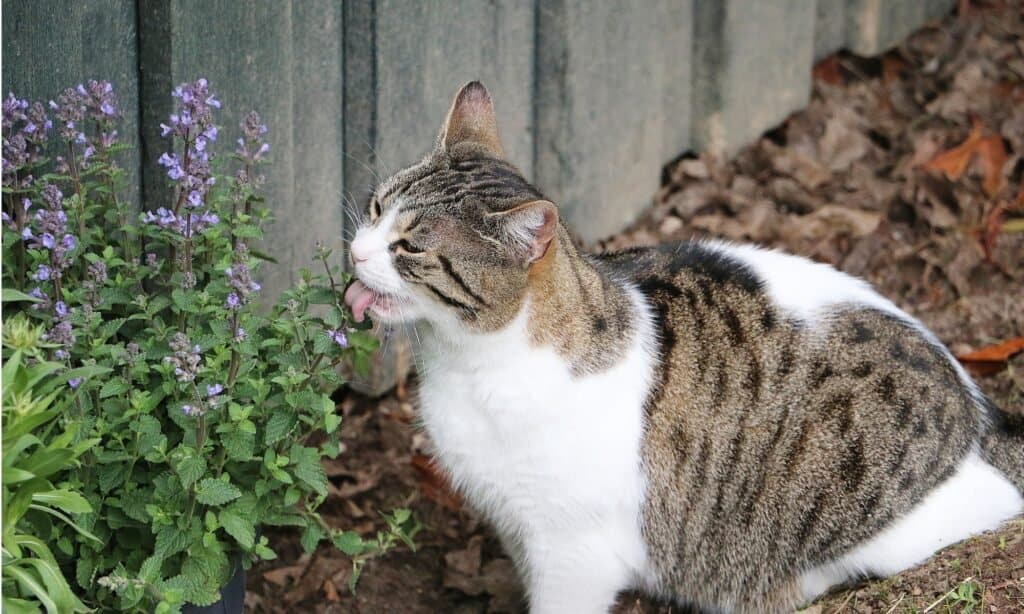Some cats go wild for catnip! When they get a good whiff of the stuff, they bounce and run and roll around in a state of kitty euphoria. Their reaction is fun to watch, but is catnip safe for cats? Are there any side effects from letting your pet cat ingest catnip? Here’s what you need to know before giving catnip to your feline friends.
What Is Catnip?

Catnip is a member of the Lamiaceae family, or mint.
©Attila Fedyk/Shutterstock.com
Catnip isn’t some chemical-laden treat you can only purchase from a specialty company. Also known as Nepeta cataria, catnip is a member of the mint family. One of the essential oils that catnip produces, nepetalactone, is what makes some cats react in such a kooky way. When cats sniff the plant, the nepetalactone affects their brain chemistry, much like cannabinoids do on the human system.
Cats React Differently to Catnip

The effects catnip has on cats can differ from feline to feline.
©Anna Hoychuk/Shutterstock.com
How the nepetalactone in catnip affects your cat’s behavior depends on how it is ingested. When a cat sniffs catnip, nepetalactone works as a stimulant. That’s why some cats get the zoomies after being exposed to the plant. The increased activity caused by catnip normally only lasts for about 10-15 minutes before wearing off. After that, it will take approximately two hours for the effect to completely disappear.
Eating catnip has the opposite effect. When consumed, the nepetalactone acts as a sedative. Cats that snag a mouthful of catnip can become drowsy and fall asleep. Maybe they’ll climb up on your lap and beg for belly scritches. Every cat is different! You may need to do some experimentation to find out how much catnip your cat can handle.
Don’t be surprised if your cat doesn’t react to catnip at all. According to research, around 50 percent of cats don’t have the genetic makeup to allow nepetalactone to affect their behavior. Most kittens under the age of six months won’t react to catnip, either. You’ll have to wait until they’re older to see if catnip affects them. An easy way to find out if your cat is sensitive to catnip is by giving them yummy treats or foods that list catnip as an ingredient. There are also plenty of cat toys on the market infused with the aroma of catnip. You never know until you try!
Is Catnip Safe to Feed My Cat?

While catnip is safe for cats in small amounts, too much can cause some negative effects.
©iStock.com/BiancaGrueneberg
According to the Humane Society of the United States, catnip is safe for cats to eat in small amounts. If your cat eats too much catnip, it can result in an upset stomach. Vomiting and diarrhea could occur. Fresh catnip packs a bigger wallop than dried catnip. Your cat would have to eat more dried catnip than fresh to feel ill effects. It is best to monitor your cat’s intake of catnip, only giving them a little bit every three to four weeks. Contact your veterinarian if you have questions or concerns.
Given in moderation, catnip can be beneficial for your cat! It can act as a sedative for anxious cats. Catnip can also be a tremendous teaching tool. Try sprinkling a tiny amount on their scratching posts or pads. Cats will begin to associate the pleasant effects of catnip with using those items. The furniture you save may be your own!
Catnip Is for People, Too!

There are many uses for catnip beyond cats’ enjoyment of it. You can even make tea with it!
©marisc/Shutterstock.com
People have used catnip leaves as a medicinal tea for generations! Catnip tea may help relieve stomach issues, such as cramps or painful gas. Some people have given it to babies to help ease their colic. You can grow catnip yourself! Find a sunny spot, drop the seeds into some good dirt, and make sure to water it. Within weeks, you’ll have your own beautiful crop of fresh catnip. Some gardeners plant catnip not only for their pets, but because the oils in the leaves help repel mosquitoes.
While it is a good idea to keep an eye on how much catnip your cat eats, remember that some human food can be dangerous for cats. The essential oils in catnip aren’t inherently harmful, but the oils in citrus fruits can cause vomiting and diarrhea. Keep your kitties away from the peels, seeds, leaves, and flesh of those foods. Refrain from giving your cat dairy products, like milk or cheese. Those foods can cause stomach issues since many cats are lactose intolerant. Although your cat may behave like an apex predator, raw or undercooked meat can contain salmonella or E. coli. No one wants their cat to come down with a bacterial infection.
Not all table food is bad for your cat! Carrots, zucchini, and green bell peppers are among the vegetables that you can feed your cat without worry. Cats can eat small amounts of certain fruits, such as strawberries and peaches. However, their taste buds can’t recognize sweet things, so vegetables may be a better choice.
The photo featured at the top of this post is © Rita_Kochmarjova/Shutterstock.com
Thank you for reading! Have some feedback for us? Contact the AZ Animals editorial team.







